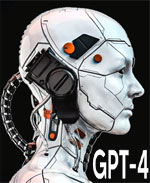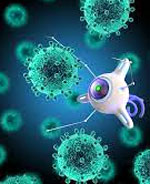

Yoga Kids, May 27 - June 21, 2024
Join me in Tagbilaran, Bohol for the Summer of Growth where kids spend their summer break learning arts and crafts, yoga and meditation, and intellectual play.

Venue:  SmartMod Balays, Capital, Hangos Street, Tagbilaran, 6300 Bohol
SmartMod Balays, Capital, Hangos Street, Tagbilaran, 6300 Bohol
Yoga for Grown-ups, May 27 - June 21, 2024
Join me in Tagbilaran, Bohol for the Summer of Growth where parents of "Yoga Kids" or working adults take on a journey of Transformation through the proven benefits of Yoga.

Venue:  SmartMod Balays, Capital, Hangos Street, Tagbilaran, 6300 Bohol
SmartMod Balays, Capital, Hangos Street, Tagbilaran, 6300 Bohol
Register: Click Here
Technological Breakthroughs
These ground-breaking technological wonders redefine life as we live it. May 18, 2024
May 18, 2024
Taking a Free Online A.I. Course
Glossary
- Machine learning - systems that improve their performance in a given task with more and more experience or data (AI adaptability). Machine learning is a type of artificial intelligence that allows computers to learn from data and improve their performance over time without being explicitly programmed. Imagine teaching a computer by showing it lots of examples. For instance, to recognize cats in photos, you feed it many cat images. The computer then finds patterns and learns what a cat looks like. Over time, it gets better at identifying cats on its own. Machine learning is used in many areas like email spam filtering, recommendations on streaming services, and voice recognition on smartphones. It's like giving computers the ability to learn and make decisions.
Machine learning is learning from experience. - Deep learning - Deep learning is a type of artificial intelligence that teaches computers to learn from lots of data, like how our brains work. It uses layers of "neurons" in a network to recognize patterns. There are different kinds, like those for understanding pictures (CNNs), sequences (RNNs), and language (transformers). This technology helps with tasks like identifying objects in photos, translating languages, and understanding speech. However, it needs a lot of data and powerful computers to work well. Despite these challenges, deep learning is making significant advances in fields like image recognition, natural language processing, and robotics.
Deep learning is learning from data...lots and lots of data. - Robotics - Robotics is the field of creating machines, called robots, that can perform tasks on their own or with minimal human help. These robots can be designed to do a wide range of activities, from assembling cars in factories to vacuuming floors at home. They use sensors to understand their environment and computer programs to decide what actions to take. Some advanced robots can even learn from their experiences. The goal of robotics is to make machines that can help humans by doing jobs that are repetitive, dangerous, or require precision. Robotics is the ultimate challenge of AI since it involves so many aspects of AI - computer vision, speech recognition, language processing, facial expression, etc.
- Robot - in AI, a robot is a vehicle/machine that has sensors (to map the environment) and actuators (to act on the environment, depending on what it needs to do) with little or full autonomy. ChatBots are not technically robots.
- Data science - Data science is the process of using data to find answers and make decisions. It combines math, statistics, and computer skills to analyze large amounts of information. Data scientists collect data from various sources, clean it to remove any errors, and then use tools and techniques to uncover patterns and insights. For example, they might analyze shopping data to understand customer preferences or study medical records to find new health trends. The goal of data science is to make sense of complex data and use it to solve problems, predict outcomes, and help businesses and organizations make better decisions.
Data science makes sense from lots of data to solve problems. - Statistics - the science of collecting, analyzing, and interpreting data to understand and describe patterns and trends. Statistics play a major role in AI. It helps us make sense of numbers and data by using tools like averages, graphs, and probability. For example, statistics can show the average score of a class on a test or predict the chance of rain tomorrow. It is widely used in various fields like AI, medicine, business, and sports to make informed decisions and predictions. By understanding statistics, we can make better sense of the world around us and make more accurate conclusions based on data. Statistics is fundamental to the development of AI algorithms
- Data science vs Statistics - In AI, Data Science uses statistical methods as part of a wider range of activities including data handling, machine learning, and domain-specific applications. Statistics provides the foundational methods for data gathering, analysis, interpretation and presentation to apply AI solutions.
- General vs Narrow AI - Narrow AI is designed to do and be very good at doing one task - like play chess. It cannot draw, it cannot converse or do anything outside chess. General AI or AGI is an Ai system doing everything intelligently like a human would. This is still in the realm of science fiction. Despite almost 50 years in aiming for this, nothing tangible has come out of it. Narrow AI on the other hand has grown leaps and bounds.
- Strong vs Weak AI - Strong AI is one that has a mind and sentient (like a human mind, but we are not theree yet with AI). Narrow AI is acting intelligently but not intelligent (like a self-driving car)
- -
- -
- -
- -
Need to Level-up
I was having lunch with Kat when she deliberated on the many ways AI is more relevant and more compelling - including having AI be the 'teacher' for home-schooled kids. I was blown away. I thought I was already proficient with AI, but now I realized I had to level-up my game. Where to start? From the bottom - what is AI?

Online Free Courses
Luckily, there are many free AI courses offered online. This is how I learn - SIY (Study It Yourself). There are even sites evaluating which free online courses are best and some of these free online courses also also certification! How cool is that?
Course: Introduction to AI
Chapter 1: What is AI?
1a. How should we define AI?
- Application 1. Self-driving cars - plan the route, see the road, react to road conditions (3 things). Same principles apply whether they are drones or automated delivery systems
- Application 2. Content recommendation - AI uses algorithm to personalize content delivery in FB, Twitter, search engines, Youtube.
Implications - the same algorithm can be used to deliver you fake news, propaganda, advertisements, etc. - Application 3. Image and video processing - AI in face recognition, AI is auto sorting photos according to dates, people and places, auto tagging, auto syncing with server back ups, etc. Image generation can have custom style rendition (Van Gogh style picture of you), AI generated main actors in movies, Implications - seeing is no longer believing
AI or Not? Why is it hard to distinguish?
- Shifting definitions - what used to be complex AI like machine generated charts is now given the term 'analytics' or what used to be machine generated probability is called 'statistics'
- Science fiction - it blur the lines of science and humans, with robots having very human emotions and dilemma
- Hard things look easy - hard things for robots look easy for us to do, like picking up something on the ground. This is a very complex thing to teach to a robot
- Easy things look hard - easy things for robots are hard for humans like playing chess. Humans devote many years of practice to be proficient, but robots compute numbers billions of times per second. It's easier for a robot to think of the next move than it is to physically move the chess piece
AI Characteristics
- AI should have autonomy - being able to do things on its own with very minimal human intervention
- AI should have adaptability - the ability to learn from its experience
Trigger Words
Defining AI using trigger-words can be misleading and frought with ambiguity.
- Understanding - AI 'understands' that a road printed on a t-shirt doesn't mean it can drive on that shirt
- Learning - AI is 'learning' chess because it improves its game with more practice
- Intelligence - AI is 'intelligent' because it can fold laundry like a human. Because AI is narrow and only specializes in a task (eg playing chess or filtering SPAM), using comparative intelligence between them doing different tasks makes no sense (is the chess player more intelligent than the spam filterer?)
AI is a Discipline and not a Counting Noun
There are blurred lines where it's not clear how much AI is present in the system. Does it make the system AI? Can you say, "a pinch of AI"? Some systems are clearly AI and some are clearly non-AI though. Wrong to say, "an AI" because AI is not a counting noun. It is a discipline like biology or physics. You don't say, "a biology synthesized chlorophyl into photosynthesis."
1b. Related fields
Computer Science > AI > Machine learning > Deep learning
- Machine learning machines that learn from their own experience. They are adaptive
- Deep learning - AI learning from lots and lots of data
- Data science - sorting through lots of data and making sense out of them
- Robotics - development and programming of robots to do what they were programmed to do. Robots are the ultimate expression of AI since it employs nearly all facets of AI
1c. Philosophy of AI
AI is not pure science. There must be a mind in AI. Can the AI mind become sentient? There are a lot of philosophical conundrums to deal with. Is human consciousness computational?
The Turing test
If an individual cannot discern if he is dealing with a fellow human or a computer, then the computer passes the Turing Test, meaning the computer already thinks and engages at the level of a human.
One problem: does being human-like mean you are intelligent?
Eugene, a child chatbot answered unintelligible answers in the same way a short attentionspan kid would, but it fooled many judges and passed the Turing Test. So, maybe the Turing Test was not about intelligence but human behavior?
The Chinese room argument
Even though the guy outside received intelligent answers and thought he was dealing with a human being on the other side of the room, the other human being was only getting instructions from a book without really knowing that is being said. So, the 'Turing' computer may give all the right answers and fool the other guy, but there is no real intelligence at play - just broken down small mechanical instructions that can be automated.
Is a self-driving car intelligent?
When a car drives by itself, it appears intelligent because it is behaving intelligently. But intelligent behavior is not necessarily being intelligent the way a human is. AI systems do not understand its environment the way a human knows it's embroiled in traffic at rush hour. Being intelligent (human) is different from acting intelligently (self-sdriving car).
How much does philosophy matter in practice?
Philosophical discourse with friends over a few drinks is intellectually stimulating, but hardly makes a dent on the way AI systems are developed and manufactured. Philosophy and practice do not necessarily impact the other. Thus the focus of this course is the 'practical practice' part and not on philosophy.
Chapter 2: AI problem solving
2a. Search and Problem Solving
Search
Most problems are actually Search problems even if it's not too obvious at the outset. After identifying the problem, best way is to start with choices available and then the goal (at what point is the problem solved?). From those 2 end points, we work on the sequence that would take us from the problem to the end goal.
Toy problem: chicken crossing
It's a simple problem and it's easy to see the solution without setting up the 64 possible scenarios. But for complex problems with combinations running into millions, it's best to use the computational approach since human thinking will fail at that load.
State Space
This is the state of all possible situations to get from point A to the end goal. In the chicken-crossing puzzle, the state space consisted of ten allowed states NNNN through to FFFF (but not for example NFFF, which the puzzle rules don’t allow). If the task is to navigate from place A to place B, the state space could be the set of locations defined by their (x,y) coordinates that can be reached from the starting point A. Or we could use a constrained set of locations, for example, different street addresses so that the number of possible states is limited.
Transitions
This is the movement from one state to another. A series of movements constitute a Path.
Costs
This is the cost (not necessarily money) for the transition. Some transitions are cheaper than others. If the goal is to take the shortest distance, then kilometers would be the natural cost. If the goal is about getting there the fastest time, then time is the natural cost.
Exercise 6: The Towers of Hanoi
2b. Solving Problems with AI
2c. Search and Games
Ending Thoughts
xxxxxxxxxxxxx
--- Gigit (TheLoneRider)
YOGA by Gigit ![]() |
Learn English
|
Learn English ![]() |
Travel like a Nomad
|
Travel like a Nomad ![]() |
Donation Bank
|
Donation Bank ![]()
Leave a comment?
Next story:

![]()
»» back to Technology
»» back to Learning
»» back to Homepage
ARCHIVE:
2024 |
JAN |
FEB |
MAR |
APR |
MAY
1970 |
1973 |
1975 |
1976 |
1979 |
1981 |
1996 |
2000 |
2001 |
2002 |
2003 |
2004 |
2005 |
2006 |
2007 |
2008 |
2009 |
2010 |
2011 |
2012 |
2013 |
2014 |
2015 |
2016 |
2017 |
2018 |
2019 |
2020 |
2021 |
2022 |
2023 |
2024 |
ALL BLOGS







